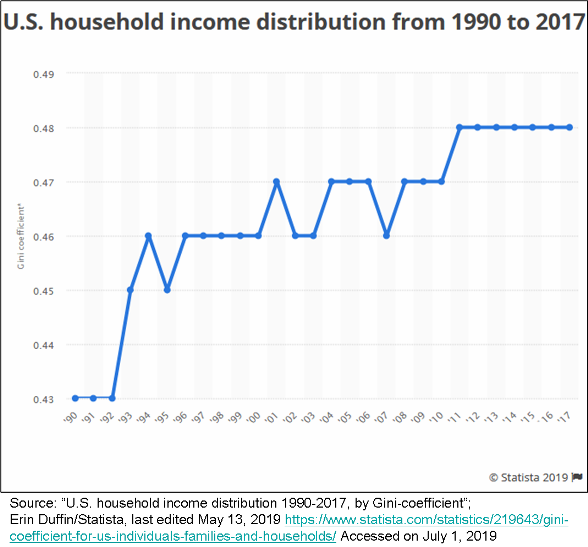Ideally, identifying and understanding problems precedes the development of solutions. Likewise, evaluating solutions should start with making sure these solutions are addressing real and well-understood problems.
Politicians run on platforms, which are statements of goals, problems, and proposed policies that aim to achieve the goals by fixing the problems. I often share the stated goals of both Republican and Democratic politicians. Yes to widespread prosperity! What’s more likely to give me pause is their take on what’s wrong with this country and what to do about it. Consider, for example, how Democratic candidates discussed economic issues in last week’s debates:
Joe Biden: “Look, Donald Trump has put us in a horrible situation, we do have enormous income inequality.”
Elizabeth Warren: “When you've got a government, when you've got an economy that does great for those with money and isn't doing great for everyone else, that is corruption, pure and simple.”
Kamala Harris: “Working families need support and need to be lifted up, and frankly, this economy is not working for working people. … Well, yeah, people in America are working. They’re working two and three jobs. So when we talk about jobs, let’s be really clear, in our America, no one should have to work more than one job to have a roof over their head and food on the table.”
Michael Bennet: “40 years of no economic growth for 90% of the American people, 160,000 families in the top 0.1% have the same wealth as the bottom 90%, and we’ve got the worst income inequality that we’ve had in 100 years.”
Tim Ryan: "The top 1% control 90% of the wealth."
Facts:
Income Inequality, as measured by the Gini Coefficient, hasn’t increased since 2011.
Between 2017 and 2018, household income increased for 80% of American households, before taxes and controlling for inflation.
Less than 5% of American workers hold more than one job - the lowest rate in over 20 years.
According to the Center on Budget and Policy Priorities, the Federal Reserve, and a 2017 study by economist Edward Wolff, the top 1% own around 40% of the wealth in the US.
Documentation:
Income Inequality (the 2018 numbers aren’t in yet):
Median Household Income Trends:
Changes in household expenditures and income by income quintile since Trump:
Multiple job holders:
My message to the above Democratic candidates: if you’re ignorant of present realities, then you can’t be trusted to create a better future.



